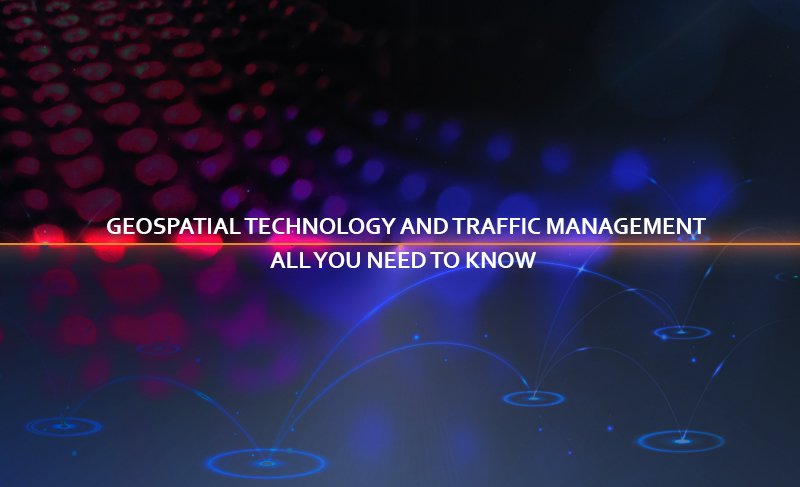
Geospatial Technology and Traffic Management: All you need to know
“In the post-COVID-19 pandemic era, emerging technologies have come to the forefront of business survival. Geospatial Technology too, is helping government agencies and municipalities manage traffic effectively and create real-time business value”.
The world is getting populated with the rise in urbanization, population explosion, and increasing movement of people to urban areas from rural areas.
As this population movement gets bigger, the issues of transportation and traffic management are on a surge with an increasing number of vehicles making the cities congested and causing ever-rising traffic across the streets.
This has not only led to an upsurge in cities’ traffic but has also resulted in complexities in managing traffic efficiently, and that’s where the significance of Geospatial Technology becomes essential.
Geospatial technology, as the name suggests, refers to the study that includes Geographic Information System (GIS), Remote Sensing (RS), and Global Positioning System (GPS) and delivers data-driven insights aiding organizations in providing meaningful solutions using data.
For a couple of decades, the issues of managing transportation networks, such as road, rail, or aviation, have become a high-risk proposition that poses threats to travelers and crew.
However, the challenges of managing a network of rising traffic across the cities are not limited to safety but also include measures such as controlling costs, ensuring reliability, and boosting the efficiencies to improve all aspects of transportation and traffic by utilizing infrastructure planning and management.
Remote sensing technology such as satellite, UAS, and LiDAR data gets combined with Big data analytics to improve safety, reduce expenses, and make better decisions, thereby driving digital solutions across the cities, mitigating traffic issues and transportation management.
Geospatial Technology and Traffic Management
Traffic management is an umbrella term that covers most things relating to moving or stationary vehicles.
Some of them include highway maintenance, route planning, and accident analysis.
Geographic Information Systems (GIS) allows businesses to deploy most of these many tasks, making them run more quickly and efficiently, enabling city planners to manage traffic effectively.
The below-mentioned trends in traffic and transportation highlight the significance of Geospatial Technology.
1.Highway Maintenance
The traffic management issue becomes more when roads need repair, and keeping track of every pothole on highway miles becomes a significant challenge. To combat this issue, satellites are utilized that produce images of highways constantly, allowing city planners to scan whole sections of roads from a distance and identify maintenance issues.
These images are further stored in a database that government officials access whenever they need them for storing, accessing, and sharing.
2.Traffic Modelling
As the need for traffic management increases, the need for traffic modeling becomes imperative.
Traffic modeling is a mathematical model that allows planners to identify and analyze traffic flows along a particular stretch of road, studying it in isolation and enabling city planners to improve traffic conditions.
The process of traffic modeling involves mapping all the factors that impact traffic, such as road width and shape, vehicle use, and construction projects using satellite imagery, combining with capabilities such as surveying, cartography, and data analytics, and carrying out the detailed mapping for effective traffic modeling.
3.Routes planning
Planning new roadways and transit routes is an effective way to improve traffic management and reduce the existing transit routes.
GIS helps organizations determine soil quality, especially with drainage and slopes.
GIS is a valuable tool for route planning and modeling, making a significant difference in planning future routes and amending existing ones.
Moreover, Geospatial technology helps organizations with real-time data that help them derive valuable insights and make profitable decisions for traffic management and traffic control across the cities.
Conclusion
Emerging technologies are reshaping organizations and the ways they work. With its unique benefits, it helps organizations streamline their business functions in unimaginable ways, providing them with a real-time view of their business. Geospatial Technology, too, is transforming the face of streets where issues such as traffic management and transportation management, which have become a headache for city planners, are getting rectified in hassle-free ways.





